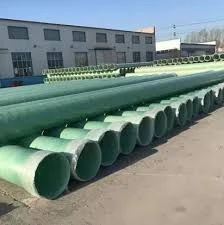
-
 Afrikaans
Afrikaans -
 Albanian
Albanian -
 Amharic
Amharic -
 Arabic
Arabic -
 Armenian
Armenian -
 Azerbaijani
Azerbaijani -
 Basque
Basque -
 Belarusian
Belarusian -
 Bengali
Bengali -
 Bosnian
Bosnian -
 Bulgarian
Bulgarian -
 Catalan
Catalan -
 Cebuano
Cebuano -
 China
China -
 China (Taiwan)
China (Taiwan) -
 Corsican
Corsican -
 Croatian
Croatian -
 Czech
Czech -
 Danish
Danish -
 Dutch
Dutch -
 English
English -
 Esperanto
Esperanto -
 Estonian
Estonian -
 Finnish
Finnish -
 French
French -
 Frisian
Frisian -
 Galician
Galician -
 Georgian
Georgian -
 German
German -
 Greek
Greek -
 Gujarati
Gujarati -
 Haitian Creole
Haitian Creole -
 hausa
hausa -
 hawaiian
hawaiian -
 Hebrew
Hebrew -
 Hindi
Hindi -
 Miao
Miao -
 Hungarian
Hungarian -
 Icelandic
Icelandic -
 igbo
igbo -
 Indonesian
Indonesian -
 irish
irish -
 Italian
Italian -
 Japanese
Japanese -
 Javanese
Javanese -
 Kannada
Kannada -
 kazakh
kazakh -
 Khmer
Khmer -
 Rwandese
Rwandese -
 Korean
Korean -
 Kurdish
Kurdish -
 Kyrgyz
Kyrgyz -
 Lao
Lao -
 Latin
Latin -
 Latvian
Latvian -
 Lithuanian
Lithuanian -
 Luxembourgish
Luxembourgish -
 Macedonian
Macedonian -
 Malgashi
Malgashi -
 Malay
Malay -
 Malayalam
Malayalam -
 Maltese
Maltese -
 Maori
Maori -
 Marathi
Marathi -
 Mongolian
Mongolian -
 Myanmar
Myanmar -
 Nepali
Nepali -
 Norwegian
Norwegian -
 Norwegian
Norwegian -
 Occitan
Occitan -
 Pashto
Pashto -
 Persian
Persian -
 Polish
Polish -
 Portuguese
Portuguese -
 Punjabi
Punjabi -
 Romanian
Romanian -
 Russian
Russian -
 Samoan
Samoan -
 Scottish Gaelic
Scottish Gaelic -
 Serbian
Serbian -
 Sesotho
Sesotho -
 Shona
Shona -
 Sindhi
Sindhi -
 Sinhala
Sinhala -
 Slovak
Slovak -
 Slovenian
Slovenian -
 Somali
Somali -
 Spanish
Spanish -
 Sundanese
Sundanese -
 Swahili
Swahili -
 Swedish
Swedish -
 Tagalog
Tagalog -
 Tajik
Tajik -
 Tamil
Tamil -
 Tatar
Tatar -
 Telugu
Telugu -
 Thai
Thai -
 Turkish
Turkish -
 Turkmen
Turkmen -
 Ukrainian
Ukrainian -
 Urdu
Urdu -
 Uighur
Uighur -
 Uzbek
Uzbek -
 Vietnamese
Vietnamese -
 Welsh
Welsh -
 Bantu
Bantu -
 Yiddish
Yiddish -
 Yoruba
Yoruba -
 Zulu
Zulu
fiberglass stack
The Benefits and Applications of Fiberglass Stack
Fiberglass stack refers to a cylindrical structure made primarily of fiberglass that is used in various industrial applications, particularly in the emissions control and ventilation sectors. This innovative material offers a range of advantages over traditional construction materials like steel and concrete, making it a preferred choice in today’s manufacturing and industrial landscapes.
One of the foremost benefits of fiberglass stacks is their lightweight nature. Fiberglass is significantly lighter than metal alternatives, which simplifies installation processes and reduces transportation costs. This weight advantage allows for easier handling and can contribute to decreased labor costs during installation. In many cases, the lighter weight also enables the use of smaller cranes and less heavy equipment.
In addition to being lightweight, fiberglass stacks possess exceptional corrosion resistance. Traditional metal stacks can corrode over time when exposed to harsh environmental conditions or chemical emissions. In contrast, fiberglass materials do not rust or degrade under similar circumstances, which can prolong the lifespan of the stack and reduce maintenance costs. This characteristic is particularly beneficial for industries that deal with corrosive gases or environments, such as chemical manufacturing and waste management facilities.
Thermal insulation is another critical advantage of fiberglass stacks. The inherent properties of fiberglass provide excellent thermal insulation, helping to minimize heat loss and regulating the temperature inside the stack. This can lead to enhanced operational efficiency and reduced energy consumption, which is an increasingly important consideration for businesses aiming to lower their carbon footprint and adhere to environmental regulations.
fiberglass stack

Moreover, fiberglass stacks are highly customizable. Manufacturers can design these stacks to meet specific requirements, including various diameters, heights, and wall thicknesses. This versatility makes them suitable for a wide range of applications, including power plants, wastewater treatment facilities, and various industrial processes. Customization options also extend to functionality, with the ability to incorporate liners or reinforcements to accommodate specific chemical or thermal demands.
The aesthetic appeal of fiberglass stacks should not be overlooked either. Many industrial sites are now more concerned with the visual impact of their facilities, and fiberglass can be crafted in a variety of colors and finishes. This can help industries maintain a more environmentally harmonious appearance, which may be beneficial for public relations and community acceptance.
Lastly, the installation of fiberglass stacks often aligns with stringent environmental regulations. Many industries face increasing pressure to reduce emissions and minimize pollutants released into the atmosphere. Fiberglass stacks are often designed with this in mind, providing efficient exhaust solutions that help companies comply with clean air standards while promoting sustainable practices.
In conclusion, fiberglass stacks represent a progressive solution for addressing the diverse needs of industrial applications. Their lightweight, corrosion-resistant nature, thermal insulation capabilities, customization potential, aesthetic versatility, and alignment with environmental regulations make them a valuable asset in various sectors. As industries continue to evolve, the demand for innovative solutions like fiberglass stacks will likely grow, marking an exciting trend in modern manufacturing and emission control technologies.
Latest news
-
Durable & Lightweight Rectangular Fiberglass Tanks Custom SizesNewsMay.30,2025
-
FRP Fuel Tanks Durable, Corrosion-Resistant Fuel Storage SolutionsNewsMay.30,2025
-
FRP Car Body Durable & Lightweight GRP Auto & Boat Body SolutionsNewsMay.30,2025
-
Innovative Tungsten Carbide Gold Mining Bits for Enhanced Drilling EfficiencyNewsMay.29,2025
-
High-Temp Fiberglass, GRP & FRP Products for Steel Smelting PlantsNewsMay.29,2025
-
FRP Panels Durable FRP Trough Covers & Moisture Traps SolutionsNewsMay.29,2025









